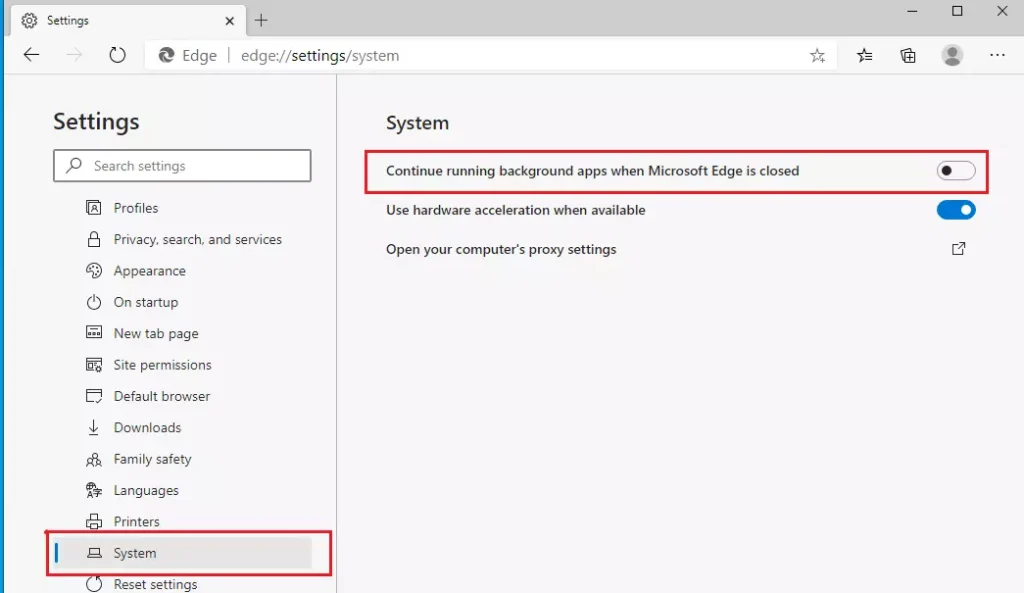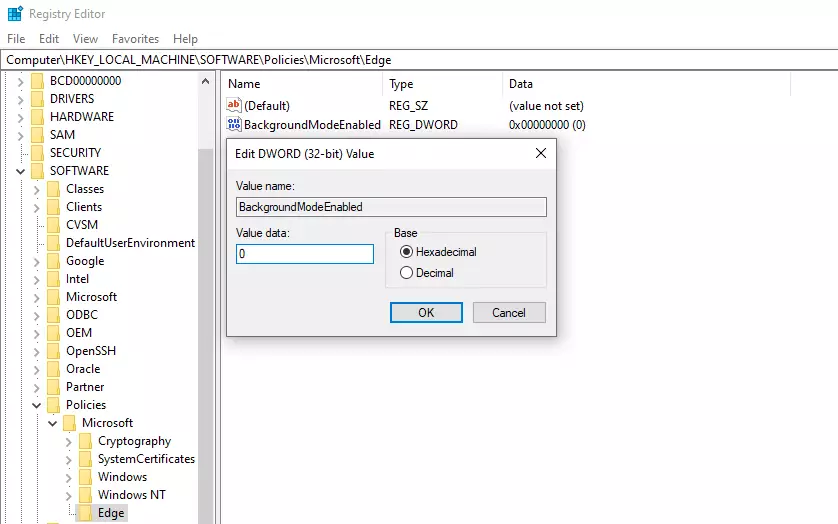This brief tutorial shows students and new users how to disable running background apps and extensions in the Microsoft Edge browser.
The new Microsoft Edge browser has adopted the Chromium open-source project code base, offering better web compatibility and performance over the legacy Edge.
The edge browser is a cross-platform that supports all Windows, macOS, and Linux systems. If you’re currently using Edge and want to learn how to disable the new feature that allows continuing running apps in the background, the steps below should show you how to do it.
By default, Microsoft Edge allows background apps and extensions to continue running in the background, even after you close Microsoft Edge. This may slow down computers in some instances.
In this scenario, background apps and the current browsing session remain active, including any session cookies.
If you want to free up vital resources on your computer and extend your laptop battery life, you may want to disable continue running background apps when Microsoft Edge.
To get started with disabling background apps and extensions in Edge, follow the steps below:
Disable running background apps
To disable background apps and extensions, open Microsoft Edge and click the 3 horizontal dots ( . ) at the top right corner of your screen, as shown in the image below.

When the Settings page opens, click on System on the left side, and click on Continue running background apps when Microsoft Edge is closed on the right side to disable.
If you want to enable it, then make sure it is turned on.

Disable running apps from the registry
You can also enable the running background apps to feature from the Windows registry.
You can also turn off this feature via the Windows registry if logged in as an administrator. To do that, use the steps below:
Using the Windows registry is one way to force all users on the System to disable the feature. There are multiple ways to do this in Windows; however, using the Windows registry is the easiest and most effective way.
To enable, press the Windows Key + R on your keyboard to open the run command box. Or use the search function to search for the Run app.

In the command box, type the commands below and press Enter.
regedit
Then the registry opens; navigate to the path below.
HKEY_LOCAL_MACHINE\SOFTWARE\Policies\Microsoft\Edge
From there, right-click on the Edge key and select the New > DWORD (32-bit) Value option to create a REG_DWORD value if you don’t see the existing BackgroundModeEnabled value already created.

Name the new DWORD value as
BackgroundModeEnabled
After saving the DWORD above, double-click it to open. Then, enter the value of 0 to enable.

(delete) = Default
0 = Force disabled
1 = Force enabled
That should do it!
Conclusion:
- Disabling background apps and extensions in Microsoft Edge enhances system performance.
- Users can easily manage background processes through the Edge settings or the Windows registry.
- Turning off background app functionality can extend battery life on laptops.
- Following the outlined steps ensures a smoother browsing experience with reduced resource consumption.
- Regularly reviewing Edge settings can help maintain optimal performance and usability.

Leave a Reply